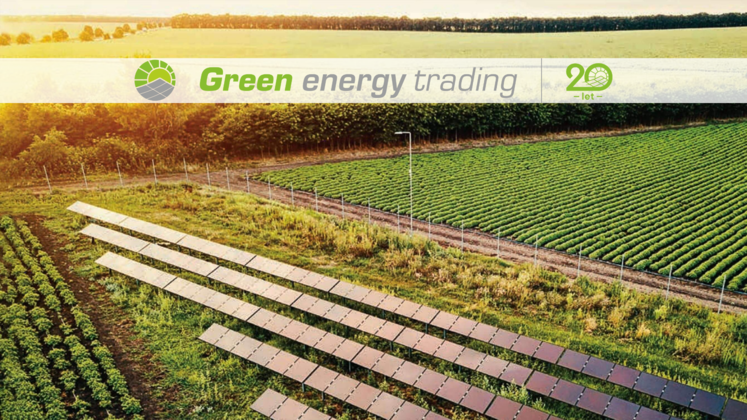Агриволтаика: бъдещето на устойчивото използване на земята
 1. 7. 2025
1. 7. 2025
With growing pressure to decarbonize the energy system while preserving arable land and biodiversity, agrivoltaics is rapidly becoming an important path to sustainable development.
One solution to two crises
Agrivoltaics, the combined use of photovoltaic systems and agricultural activities, addresses two fundamental challenges: the demand for clean energy and the preservation of fertile agricultural land. As ground-mounted photovoltaic installations are often criticized for taking up agricultural land, agrivoltaics offers an advantageous alternative.
As the report highlights, agrivoltaics can strengthen the resilience of agriculture to climate change by protecting crops from extreme weather conditions, which can lead to improved water retention and even the creation of biodiversity-enhancing habitats. This dual function makes agrivoltaic systems particularly relevant at a time when climate phenomena are intensifying and the world's population continues to grow.
Global trends and technological diversity
The report highlights the enormous potential of agrivoltaic applications, from compact above-ground systems in Japan adapted to horticulture to large-scale interstitial systems in the US focused on grazing and pollinators. By 2021, agrivoltaics had grown from just 5 MWp in 2012 to 14 GWp worldwide, thanks to active government support in countries such as France, Germany, Italy, and China.
Different agrivoltaic configurations vary considerably. Above-ground systems, interstitial photovoltaic installations, and integration into greenhouses offer unique advantages and design challenges. And because agricultural practices vary widely around the world, there is no one-size-fits-all approach. It is therefore essential to carefully match crop types and system design to the climate.
Modeling and simulation tools
To maximize the effectiveness of agrivoltaics, it is necessary to model and simulate agricultural and photovoltaic performance prior to installation. This is essential to ensure optimal system design and operation.
Various modeling approaches can be combined to simulate the interactions between photovoltaic panels and agricultural activities, ranging from solar radiation simulation and shading analysis to crop productivity and soil hydrology models. However, modeling becomes more complex when parameters such as geography, crop type, and local climate are taken into account. There is therefore an urgent need for integrated tools that can flexibly combine these variables.
Performance frameworks and key performance indicators
To support consistent assessment, the report proposes a comprehensive framework for evaluating the performance of agrivoltaic systems. At its core are several key performance indicators, including:
- Land equivalent ratio: Measures the combined productivity of agriculture and energy compared to their individual performance on separate plots.
- Specific yield (kWh/kW): Indicates the electrical productivity per installed capacity of the photovoltaic system.
- Water productivity (WP): Evaluates the efficiency of water use in crop cultivation under photovoltaic panels.
These parameters are basic benchmarking tools that allow not only the dual performance of agrivoltaics to be evaluated, but also its trade-offs and synergies.
Operational challenges and monitoring
Agrivoltaic systems require strict monitoring protocols due to the interdependence between their different components. For example, shading caused by photovoltaic panels can affect crop growth, while agricultural activities can increase wear and tear on the photovoltaic infrastructure. Monitoring systems must therefore simultaneously track agricultural yield, electrical output, microclimate variables, and system maintenance needs.
Operational challenges also include greater complexity and risks in maintenance and operation, safety issues in systems integrated with livestock farming, and logistical difficulties in coordination between farmers and energy system operators. The report supports adaptive monitoring frameworks and regular data analysis to prevent performance bottlenecks.
Setting the path forward
Agrivoltaics is still a young industry and faces many challenges, such as the need for integrated modeling tools and uncertainties around operation and maintenance and long-term performance. However, as the report clearly shows, the opportunities are enormous. Dual use could play a transformative role in achieving climate goals, preserving ecosystems, and supporting agricultural productivity in a warming world.
Future research and policy should focus on refining definitions of agrivoltaics, developing performance-based incentives, and funding interdisciplinary studies to fill knowledge gaps. By focusing on design, monitoring, and collaboration, agrivoltaics can move from experimental pilot projects to mainstream solutions in energy and agriculture.
With growing pressure on land use, agrivoltaics offers a promising model in which solar panels not only generate energy but also help cultivate the land on which they stand.
